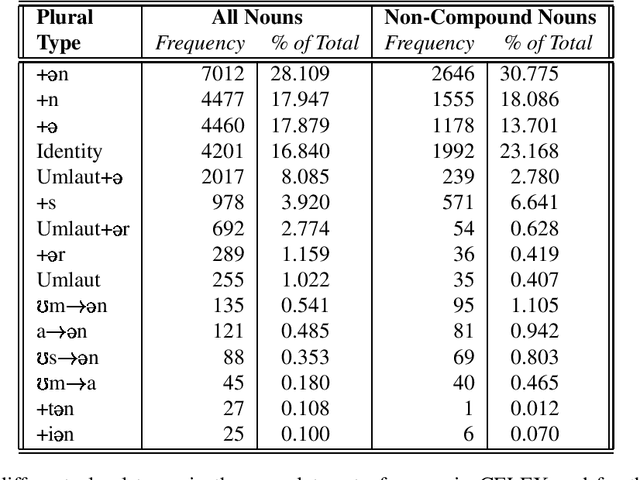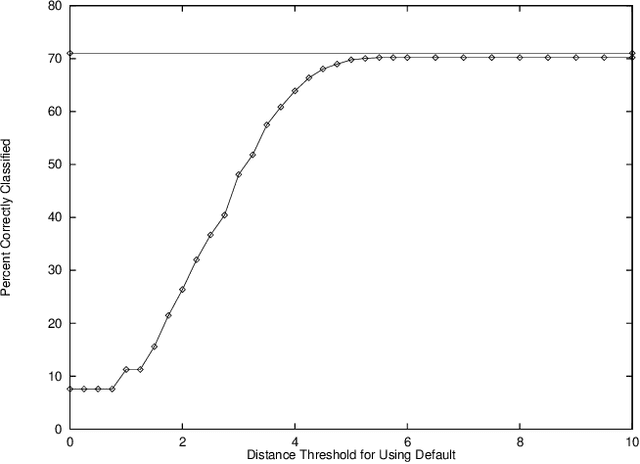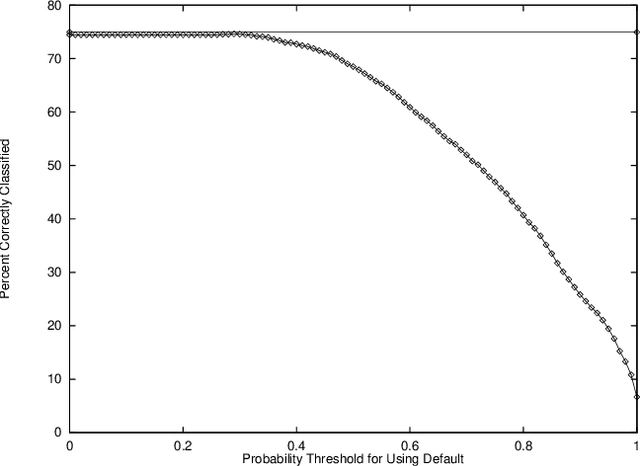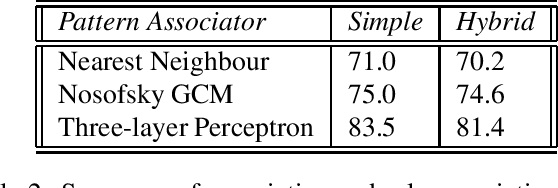Where Defaults Don't Help: the Case of the German Plural System
Paper and Code
May 13, 1996



The German plural system has become a focal point for conflicting theories of language, both linguistic and cognitive. We present simulation results with three simple classifiers - an ordinary nearest neighbour algorithm, Nosofsky's `Generalized Context Model' (GCM) and a standard, three-layer backprop network - predicting the plural class from a phonological representation of the singular in German. Though these are absolutely `minimal' models, in terms of architecture and input information, they nevertheless do remarkably well. The nearest neighbour predicts the correct plural class with an accuracy of 72% for a set of 24,640 nouns from the CELEX database. With a subset of 8,598 (non-compound) nouns, the nearest neighbour, the GCM and the network score 71.0%, 75.0% and 83.5%, respectively, on novel items. Furthermore, they outperform a hybrid, `pattern-associator + default rule', model, as proposed by Marcus et al. (1995), on this data set.
 Add to Chrome
Add to Chrome Add to Firefox
Add to Firefox Add to Edge
Add to Edge